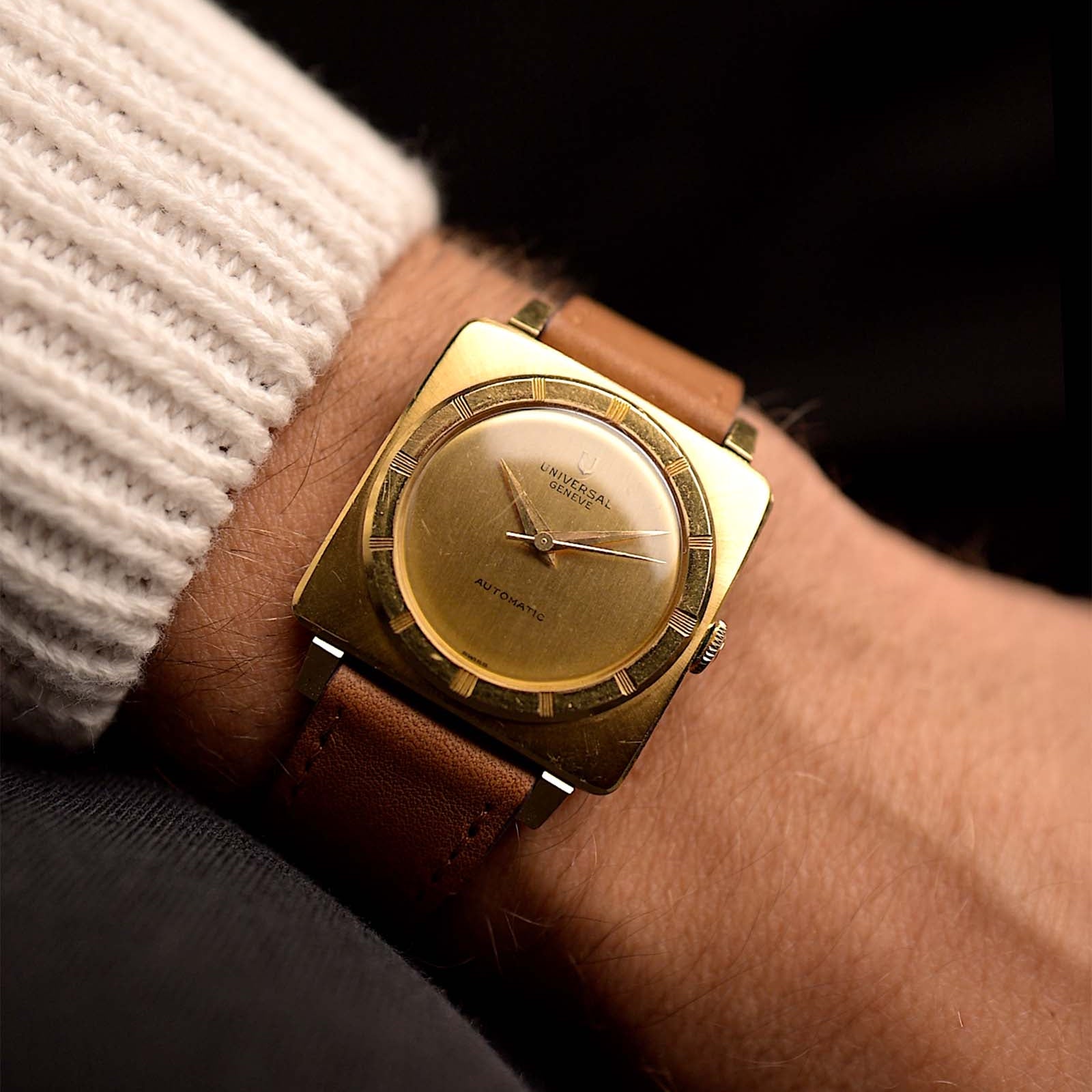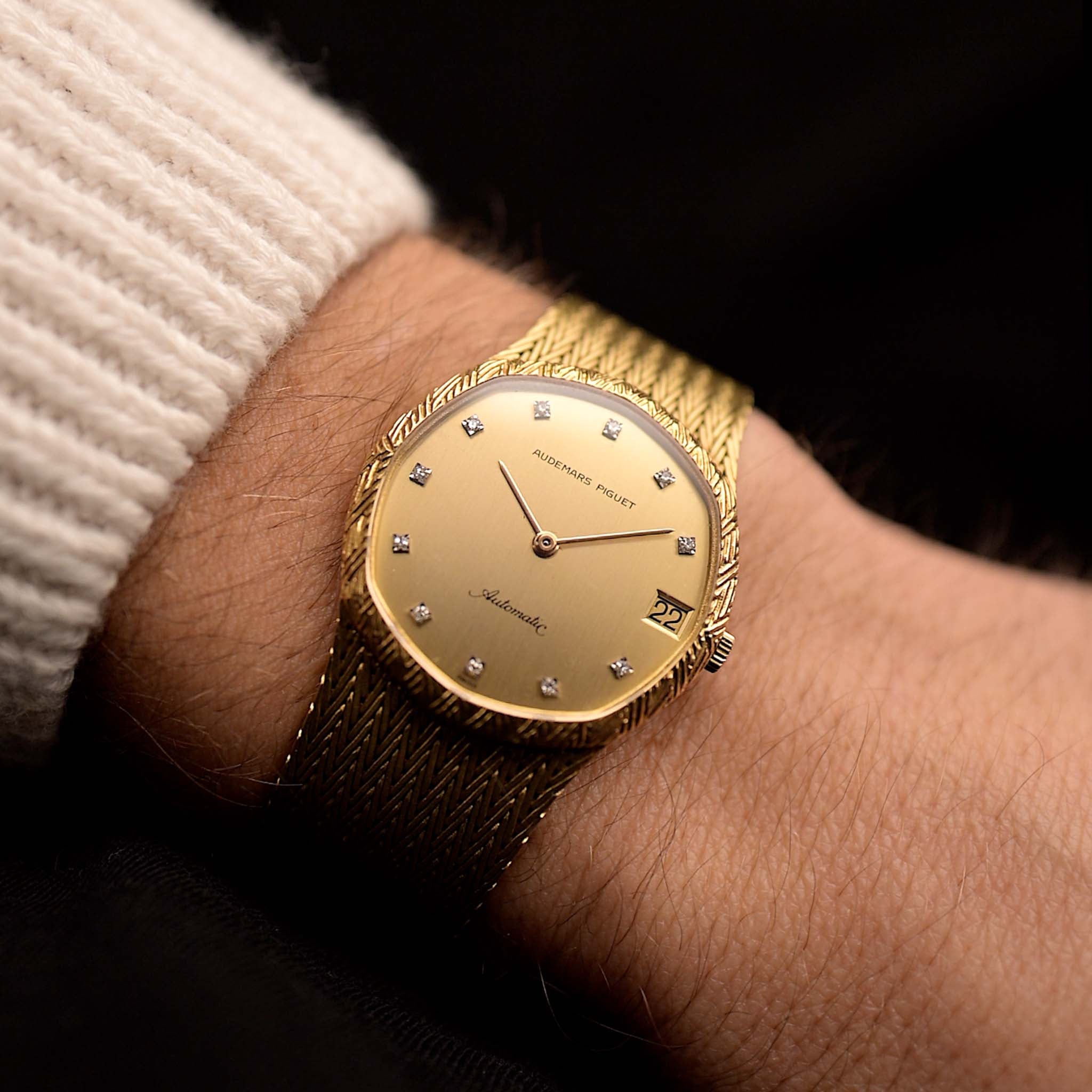What I often hear from - vintage - watch enthusiasts is that the modern watch landscape is getting increasingly dull. Every brand is simply doing the same, no strong design evolutions and you tend to see the same 3 watches everywhere. But what's at the bottom of this? Are we simply living through a period of very clear and fixed default designs? That probably has happened before, right? Another reason for this perception might be that the image we get from the watch world is majorly formed through platforms like Instagram. Does this correspond to the correct state of the watch world?
August 23, 2022
Pabulum... Were Watches Ever Monotonous?

Marcus Siems @siemswatches
Collector, Author, Data Analyst
Thesis - Antithesis What I often hear from - particularly vintage - watch enthusiasts is that the modern watch landscape is getting more and more dull. Every brand is simply doing the same, no strong design evolutions and you tend to see the same 3 watches everywhere. But what's at the bottom of this? Are we simply living through a period of very clear and fixed default designs? That probably has happened before, right? Because little variation also means that we got well defined archetypes, which some call "iconic designs".
What's the design of an era? ... well that's probably the question in the subtext of most, if not all of my articles. So let's make this question a bit more explicit here and further ask: Is there a clear trend at a given epoch?
What all these rather abstract questions boil down to is variation. Do we see a lot of variation, that would mean that this is an era of free design and little boundaries. On the other side, when there is little to no variation, that would indicate that we are in an era with a clear design template.
![]() A very classic design yet with some variation to it... Photo Omega Seamaster XVI Olympics (prototype) with a stunning creme lacquer dial @goldammer.me
A very classic design yet with some variation to it... Photo Omega Seamaster XVI Olympics (prototype) with a stunning creme lacquer dial @goldammer.me
Here, we gonna have a closer look at this variation*. How similar do watches of a certain era look among each other and how does this variation evolve over time? And how does that behave for certain features of watch design? Is this variation the same for, let's say, hands and dial color?
Here, we first analyze the mean variation over key design elements - namely watch type, diameter, case shape, bezel style, dial color, hour marker, hand style, numeral layout - and plot it over the last 80 years.
 Figure 1. Distribution of the Design Variation - averaged over all features (watch type, diameter, case shape, bezel style, dial color, hour marker, hand style, numeral layout) - from 1940-2000[1].
Figure 1. Distribution of the Design Variation - averaged over all features (watch type, diameter, case shape, bezel style, dial color, hour marker, hand style, numeral layout) - from 1940-2000[1].
So that's the variation over time, now what can it tell us? First, we can see a clear minimum in the 1950s. I've pointed it out before and we can observe it here again: It's THE dress watch epoch of the last Century. A very clear design trend. Before the 50s we had the war years and with it the mixture of military and dress watches, both markedly different and as such driving the variation up.
 A 1950s (dress watch) design with a hint of modern tool-watch - the Universal Geneve Polerouter Date. Photo @goldammer.me
A 1950s (dress watch) design with a hint of modern tool-watch - the Universal Geneve Polerouter Date. Photo @goldammer.me
But what happens after the 1950s? One obvious bottomline is that the variation in the watch world - with a slight exception in the 1980s - is actually increasing. To the end of the last Century we're seeing more and more designs branching out. So which features are driving this increase? Is the upward trend visible for all design elements or just a few?
 Figure 2. Historic Distribution of Design Variation for Key Design Elements - watch type, diameter, case shape, bezel style, dial color, hour marker, hand style, numeral layout - between 1940-2000.
Figure 2. Historic Distribution of Design Variation for Key Design Elements - watch type, diameter, case shape, bezel style, dial color, hour marker, hand style, numeral layout - between 1940-2000.
There indeed is a lot to unpack. With further ado let's dive into the manifold results.
1) Size variation during WWII
A very telling point for the early years in our analysis is the variation within the case size distribution. Two contradicting trends are behind that. First, the classic and elegant watch of the time is still following the trend to be rather small. It's a sign of quality if you can pack all the intricate mechanics into a smaller case[2-3]. On the other end of the spectrum you got military watches, or more precisely pilot's watches. Those had to be handled mid-flight while the pilots have been wearing gloves and needed large dials to ensure maximum legibility.
 In the 1940s there's also been quite some variation to the dress watch segment itself - case and point by this beautiful and complicated Omega 2471 Cosmic with dagger markers and leaf hands. Photo @goldammer.me
In the 1940s there's also been quite some variation to the dress watch segment itself - case and point by this beautiful and complicated Omega 2471 Cosmic with dagger markers and leaf hands. Photo @goldammer.me
2) Design explosion of 1970
The Sixties and Seventies have truly been a time of free spirit. And we can nail this perfectly in our analysis here. It shows peak variation for watch hands (1962), watch type (1967), case size (1968), case shape (1974) and dial color (1978). During this time more and more tool watches become popular and all share the popularity, there isn't one clear favorite. And with variable watch types come variable designs. This defines this creative epoch in watchmaking history.
 The 1960s and 70s have been an epoch of creative designs all throughout the board. Be it sturdy racing chronographs or ultra high precision (and frequency) movement like this chocolate Longines Ultra-Chron from the late 60s. Photo @goldammer.me
The 1960s and 70s have been an epoch of creative designs all throughout the board. Be it sturdy racing chronographs or ultra high precision (and frequency) movement like this chocolate Longines Ultra-Chron from the late 60s. Photo @goldammer.me
3) General increase of the 90s
Opposite to clear temporary peaks of the 1960s and 70s during the 90s there is more of a general rise of variability all throughout the features. Late in the last century watch design seems to be opening up and sparking several trends instead of following one prototypical piece. We see this most clearly with watch types, but also watch bezels are as variable as never before. The only exceptions from the relative increase are dial color (which appears to become again more monotonic) and case shape (which is simply as low/round as ever).
 You either love or hate the aesthetics of the late 80s and 1990s. But the era in itself is also quite variable. From highly complicated yet ultra-thin automatic gold watches all the way to the flashiest of the flashy gemset statement pieces. Photo @goldammer.me
You either love or hate the aesthetics of the late 80s and 1990s. But the era in itself is also quite variable. From highly complicated yet ultra-thin automatic gold watches all the way to the flashiest of the flashy gemset statement pieces. Photo @goldammer.me
4) BUT maximum variation is spread out
Even though the high variability of the design elements does overlap at certain time points, with a few exceptions, they never peak at the same time. This means that there has always been one particular design element that was tweaked and changed and kept flexible throughout the years. It's really not that either everything is variable or everything is fixed.
There's a time for each key design element, a time when the watchmaking industry is experimenting with it. It's never dull, the variation is in the details!
 There's nothing wrong with an epochal and defining design. This IWC Cal. 852 is as much a 1950s watch as you could imagine: Dauphine hands, square markers, 6-12 numerals, and some fancy lugs. Photo @goldammer.me
There's nothing wrong with an epochal and defining design. This IWC Cal. 852 is as much a 1950s watch as you could imagine: Dauphine hands, square markers, 6-12 numerals, and some fancy lugs. Photo @goldammer.me
I unfortunately don't have the numbers for the last years but I'd argue the same is still happening today. We might get trapped in our own social media bubble, showing us the same pieces over and over again. Similarly, most watch outlets are discussing the same new releases obscuring our view for marked changes elsewhere. The last word isn't spoken on this but for now I'd say we shouldn't lose all hope on the current watch landscape. There's plenty of design variations coming from the Indies and smaller brands, so let's just hope that this freedom will again spill over to the broader market very soon.
* For the statistically inclined reader: The variation of categorical variables isn't that easy to quantify. Here, I use cumulative probability distribution of the ascendingly ordered labels within a feature and within each year (read it again slowly ;) ). Within this distribution I (spline-) interpolate the halfmax point (50%) and divide this from the number of labels of that given feature. Sounds only complicated, just send me a message if you're interested in the details.
References
[1] ~6,000 Watches from Chrono24, extracted 2020 Nov. 29th and Jan. 6th 2022; Karlsruhe, Germany;
[2] When Did Watches Start to Get So Big?; Marcus Siems, Goldammer Vintage Watches;
https://goldammer.me/blogs/articles/history-watch-size
[3] Gent's Watch Sizes (Why Size is Irrelevant); Michal Kolwas, WahaWatches;
https://wahawatches.com/gents-watch-sizes-why-size-is-irrelevant/
All rights on text and graphics reserved to the author.




























Leave a comment